 NIGEL HEWITT-COOPER
NIGEL HEWITT-COOPER
CARNIVOROUS PLANTS
Gardening with Extraordinary Botanicals
TIMBER PRESS
PORTLAND, OREGON

Cephalotus follicularis, Darlingtonia californica, Sarracenia flava var. cuprea, Heliamphora nutans, Nepenthes rajah, Dionaea muscipula.
Copyright 2016 by Nigel Hewitt-Cooper. All rights reserved.
Published in 2016 by Timber Press, Inc.
Photo credits appear on .
Thanks are offered to those who granted permission for use of materials. While every reasonable effort has been made to contact copyright holders and secure permission for all materials reproduced in this work, we offer apologies for any instances in which this was not possible and for any inadvertent omissions.
The Haseltine Building
133 S.W. Second Avenue, Suite 450
Portland, Oregon 97204-3527
timberpress.com
Book design by Stacy Wakefield Forte
Cover design by Kristi Pfeffer
Library of Congress Cataloging-in-Publication Data
Hewitt-Cooper, Nigel, author.
Carnivorous plants : gardening with extraordinary botanicals/Nigel Hewitt-Cooper. First edition.
p. cm
Includes index.
ISBN 978-1-60469-758-2
1. Carnivorous plants. I. Title.
SB432.7.H48 2016
635.93375dc23
2015029658
A catalogue record for this book is also available from the British Library.
To my family, who have tolerated my botanical madness for the past three decadesespecially my wife Polly and my three children, Tom, Lily, and Daisy. And to Uncle Jim, who bought me that first Venus flytrap in 1981.

CONTENTS
INTRODUCTION
Nigel, It is obvious you share my passion and knowledge of the species. Long may you continue to do so.
ADRIAN SLACK
T his brief message came to me as this book was in production. I have made the acquaintance of Mr. Slack, and the fact that he considers my passion and knowledge of these species to be in the same realm as his is deeply gratifying. He is without doubt the preeminent name in the modern-day cultivation of carnivorous plants. His books fueled my early interest; in fact, his Insect-Eating Plants and How to Grow Them was the last book written by an Englishman on carnivorous plant cultivation, some thirty years ago.
My interest in the botanical world (today I admit to a straight-up obsession) came at an early age. I grew up in the once-leafy London suburbs, where my grandmother, who lived locally, was one of those people who could grow virtually anything with a good degree of success. She had a small wood-framed greenhouse in her garden which was barely six feet (two metres) square. As a child, I would delight in accompanying her there to water the occupants within.
Even at that young stage, I found the incredible variation of form and colour fascinating, and as I looked upward through the green canopy in this tiny Eden, I recall being awestruck by the beauty of the diversity.
When I was seven, an uncle bought me my first Venus flytrap. At that time, such plants (almost certainly ripped from the wild, unfortunately) could be found in garden centres, protected under unnecessary plastic domesfurther prompting the curiosity of my seven-year-old mind. This poor specimen, like millions of its brethren, was doomed to die. But for me, it was an introduction to a group of plants which was to become a fascination that has captivated and at times frustrated me for thirty-five years. The largest obstacle to overcome in the early 1980s was the lack of information available on the subject. Aside from a handful of dedicated fanatics, carnivorous plants were generally unknown to the wider public; even now there are many who could not name an example besides the ubiquitous flytrap.
Back then, Adrian Slacks groundbreaking Carnivorous Plants, published in 1979, was the only English-language book on the subject that was up to date. This title not only (though predominantly) covered the taxonomic nuances of these plants, but also for the first time touched, albeit briefly, on cultivation.
Only a year earlier, the UKs Carnivorous Plant Society had been formed, its aim to bring together like-minded individuals who had been bitten by the bug, so to speak. Through the organizations journals and newsletters one could read of other enthusiasts successes and failures, the latter of which were common for us all.

Dionaea muscipula Sawtooth.
The paucity of information and available plant material meant that a growers primary goal was to maintain plants in cultivation. Any experiment that might result in a loss was out of the question, and the suggestion that temperate species could be grown outside was the furthest thing from our minds.
Slack followed up his first book with Insect-Eating Plants and How to Grow Them in 1986. As suggested in the title, the books focus was cultivation; it brought together early successes and served to introduce the hobby to a wider audience. My own collection grew as quickly as it could with the limited number of plants available, and I had my own personal triumphs and disasters, at times in equal measure. But the interest remained resolute.
By the early 90s there were a number of books, both botanical and with an emphasis on cultivation, written by authors around the world. The number of species in cultivation increased exponentially as more people became hooked on the diversity and beauty of such unusual plants. This growth, combined with the advent of the Internet and the ease with which information can be shared, has meant an explosion of knowledge over the past fifteen years. The combined work and travel of a comparatively small number of intrepid adventurers has also resulted in a large number of new species being described since 2000.
It seems there remains a gap in the market, howevera lack of information in print as to the general cultivation of carnivorous plants. I still hear this from people, as well as the problem that the huge amount of information available online is bewildering and often contradictory.
The purpose of this book is to act as both a general introduction to the genre of carnivorous plants, and as a guide for the more advanced grower who may have had a few successes and wishes to delve deeper into this peculiar and somewhat alien world. Cultivation is the primary intent, and I will cover the more commonly and easily grown representatives of a number of different genera, relying on plants that can successfully be grown in the home and garden.
There are a number of myths and misconceptions that surround carnivorous plants, in fact probably more than any other horticultural grouping, which does little to endear them to potential growers. I hope to dispel many of these erroneous assumptions.
To many, the mention of carnivorous plants evokes images of hot, tropical conditions. There are species that thrive in such environments, but most that you are likely to encounter and grow successfully are in fact temperate.
Next page
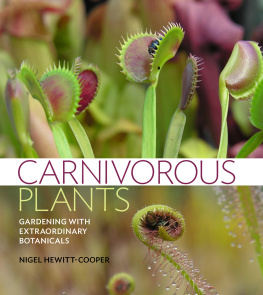

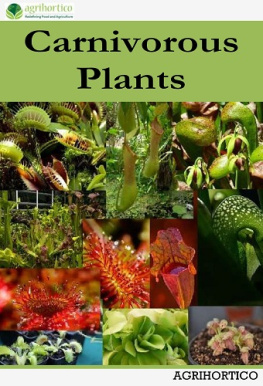

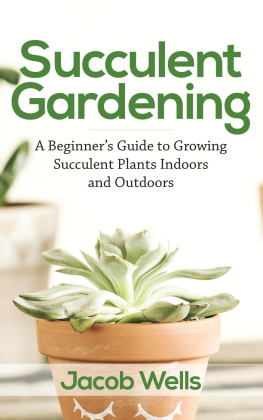
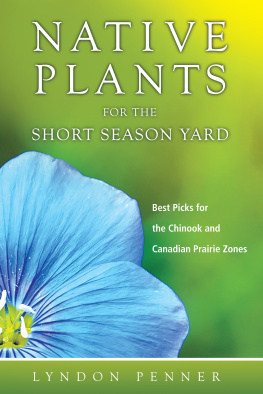


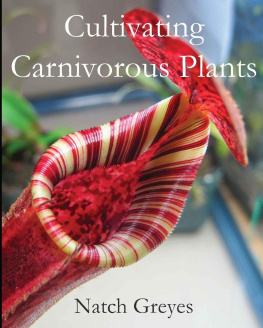
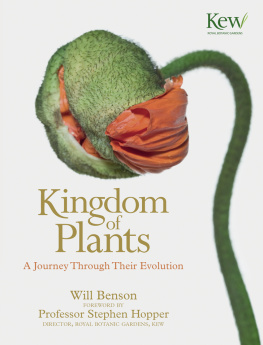
 NIGEL HEWITT-COOPER
NIGEL HEWITT-COOPER


